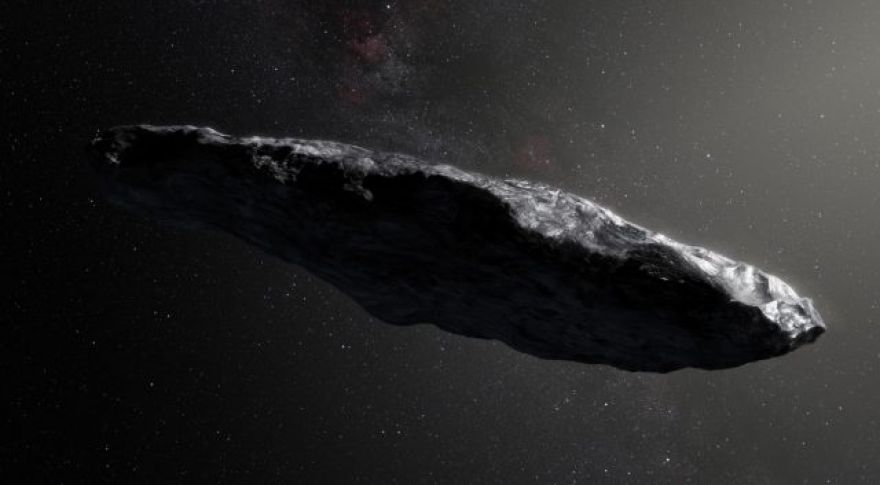
Interstellar Object ‘Oumuamua Might Be a Hydrogen Iceberg
Astronomers discovered our first confirmed interstellar visitor in 2017, naming it ‘Oumuamua, the word for “scout” in the Hawaiian language. Determining what ‘Oumuamua actually was proved a more daunting task. Eventually, astronomers decided ‘Oumuamua was probably a very old comet, but a new analysis suggests it may be a different kind of object altogether — an interstellar hydrogen iceberg.
‘Oumuamua had scientists scratching their heads because everyone had always assumed our first alien visitors would be comets ejected from another solar system’s Oort Cloud. However, ‘Oumuamua didn’t form a coma or vaporized material as it neared the sun. So, an asteroid? Not so fast — more analysis showed ‘Oumuamua’s course was being nudged by outgassing from its surface.
The analysis from Yale astrophysicists Darryl Seligman and Gregory Laughlin admits that a hydrogen iceberg is a rather exotic object to be flying through the solar system, but it would explain all of ‘Oumuamua’s bizarre properties. Hydrogen usually exists as a gas, but it’s possible to freeze it at very low temperatures (around -450 degrees Fahrenheit). Clumps of frozen hydrogen are believed to exist in the centers of dense molecular clouds where temperatures are near absolute zero. Could one of those hydrogen icebergs have floated our way?
Frigid molecular clouds only last a few hundred thousand years before dissipating. However, over that time a cloud could generate a block of hydrogen ice a few hundred meters across. It just so happens that’s about the same size as ‘Oumuamua, which is less than 800 meters long. This could also explain why ‘Oumuamua is cigar-shaped. After a cloud disperses, cosmic radiation would erode the iceberg as it floats through space. Uneven radiation from nearby objects could cause it to become cigar-shaped like ‘Oumuamua.
‘Oumuamua’s path through the solar system in 2017.
Perhaps the strongest evidence for the hydrogen iceberg theory is that it would explain how ‘Oumuamua changed course after entering the solar system. Comets get a small boost from outgassing but remember: ‘Oumuamua had no visible coma. Its course change could be explained if it was releasing pure hydrogen. That would give it a little nudge, and hydrogen gas would not be visible from here on Earth.
This all hangs together well, but there’s no way to confirm it right now. ‘Oumuamua is moving too fast for us to intercept as it leaves the solar system. Many astronomers believe other interstellar objects pass through the solar system on a regular basis. It’s just a matter of spotting them. If we see another object like ‘Oumuamua, we may have a chance to test the iceberg hypothesis.
Now read: